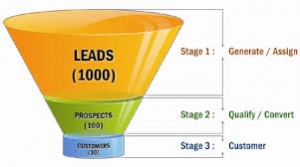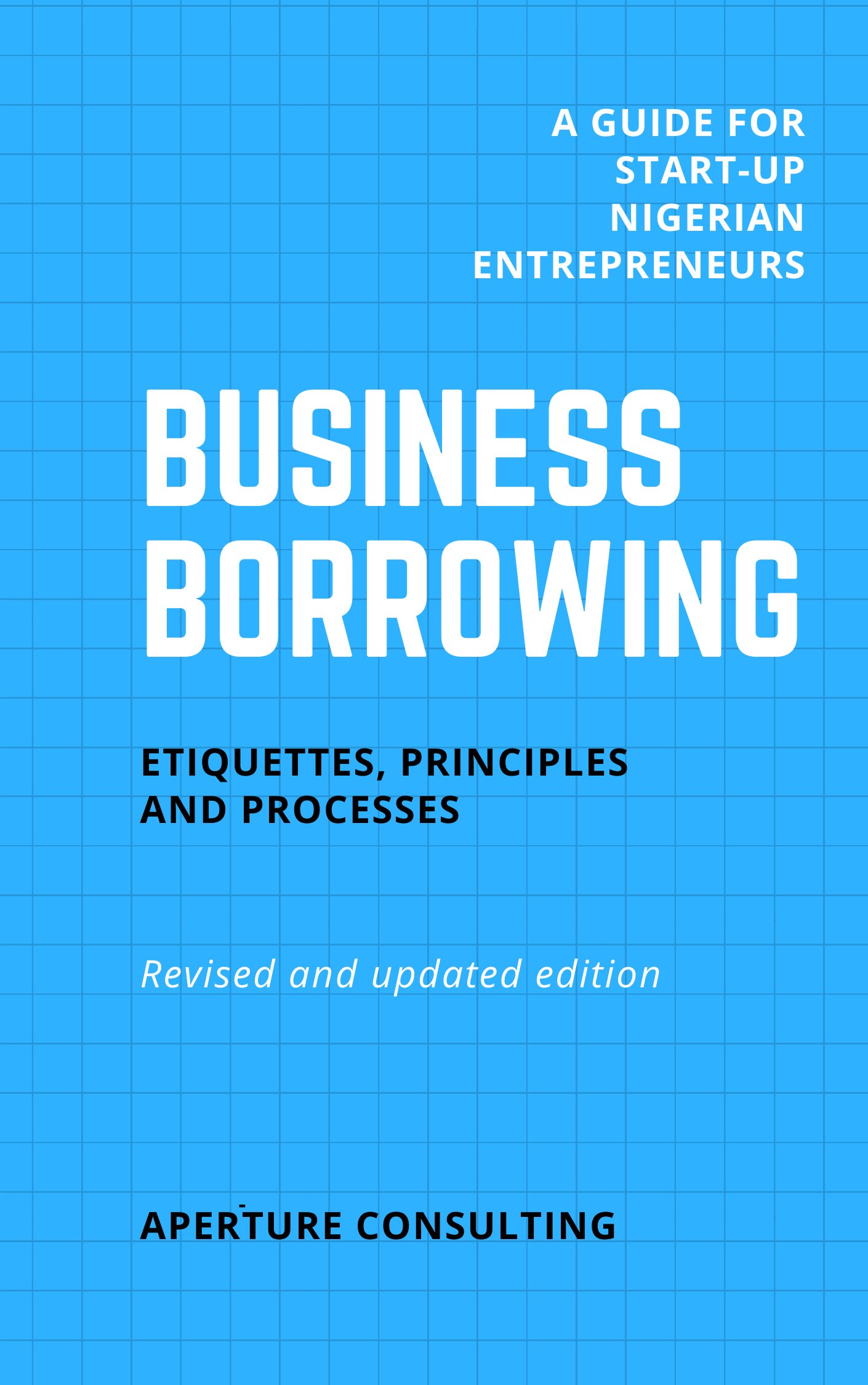 Every function is important in business. From your supply chain management to production; from personnel management to finance and administration; from design and engineering to marketing, etc. You simply can not take any function for granted. As the saying goes, ‘a chain is only as strong as its weakest link’. In spite of what I just said however, if you are starting your business or want to take it to the next level, selling is a necessary function you must keep a keen eye on. Generation of revenues from sales is what will sustain your ability to cover your operational costs and make a net profit. A persistent and prolonged failure to generate cash from sales will ultimately lead to failure and even bankruptcy. It is therefore extremely important for the entrepreneur to ensure that the whole enterprise is primed to operate as one large selling outfit. How do you succeed in doing that?
Every function is important in business. From your supply chain management to production; from personnel management to finance and administration; from design and engineering to marketing, etc. You simply can not take any function for granted. As the saying goes, ‘a chain is only as strong as its weakest link’. In spite of what I just said however, if you are starting your business or want to take it to the next level, selling is a necessary function you must keep a keen eye on. Generation of revenues from sales is what will sustain your ability to cover your operational costs and make a net profit. A persistent and prolonged failure to generate cash from sales will ultimately lead to failure and even bankruptcy. It is therefore extremely important for the entrepreneur to ensure that the whole enterprise is primed to operate as one large selling outfit. How do you succeed in doing that?
Offer a saleable product: Your first challenge is to ensure that the product (physical good or service) that you offer is saleable. You must have conducted a diligent feasibility study and developed a sound business plan. Often times, companies have succeeded by simply ‘tweaking’ product presentation or service. Other times, companies have succeeded by inventing completely new products. It is your calling to decide how you believe you will succeed. No matter the option you are taking though, the ultimate objective and challenge is to achieve sufficient volume of sales of the product to cover your running costs and deliver profits. No product is successful if to does not do this (we are not considering ‘loss-leading’ products here, as this will be covered under a different topic in the near future).
As mentioned earlier, frequently, we sell commodities that are also offered by the competition. In such situations, we should be clear about what the ‘unique selling proposition’ (‘USP’) of our product is. The USP of a product are the compelling benefits that makes it stand out from the competition. It gives the customer a good and irresistible reason to select your product rather than that from the competition. It is important you are clear what your USPs are. It is equally important to understand that the development of USP is a continuous challenge. This is because your competition will almost certainly be able to catch up with you within a certain period. To keep up and ahead therefore, you should remain close to your customers and be able to understand and anticipate economic and social factors that may alter their needs and expectations over a time horizon.
 Understand the selling process: Understanding the selling process helps you act appropriately at each stage. Theoretically, the process differs from one school to another. Basically however, they cover the same issues. It starts from your ‘prospecting’ for customers to making the ‘approach’. Thereafter, you need to make a needs ‘assessment’ and then on to ‘presentation’ before finally making the ‘close’. Understandg the details of each stage will help you prepare well, as well as enhance your ability to meet the customers’ needs and improve your chances of succes
Understand the selling process: Understanding the selling process helps you act appropriately at each stage. Theoretically, the process differs from one school to another. Basically however, they cover the same issues. It starts from your ‘prospecting’ for customers to making the ‘approach’. Thereafter, you need to make a needs ‘assessment’ and then on to ‘presentation’ before finally making the ‘close’. Understandg the details of each stage will help you prepare well, as well as enhance your ability to meet the customers’ needs and improve your chances of succes
Prime your enterprise to sell: Another key to success is to ensure that your whole company is primed to sell. As the saying goes ‘nothing happens until a sale is made’. I remember I had a boss who will put any staff meeting on hold if a customer comes on unscheduled visits. He will tell us something like ‘look, we are meeting to achieve our sales target. The customer who will make it possible is here. We have to see him/her first’. The idea is that you should educate and get all staff to have the ‘sale mentality’. That is from your front desk right down to the back-end of your operations, all staff must support marketing and sales effort. Obviously, that is not to say that all staff will be directly involved in deciding price or the promotional modes to be adopted. Rather, it is that all staff must support the sales effort within their specific role or function. For instance, the inventory control officer must process his papers timely and correctly to ensure quick release of the product, whilst the despatch officer must ensure safe and timely delivery to the right customer.
All staff must be made to realise, and act in acknowledgement of the fact, that the survival and success of the company ultimately depends on its ability to sale.
To me, job titles don’t matter. Everyone is in sales. It’s the only way we stay in business. – Harvey Mackay
Understand your customers: Your ability to serve your customers well depends on the extent to which you understand them. It is therefore important that you study and understand your customers. Listen to, and observe your customers. Sometimes you have to be on the same page with your customers and other times you have to be ahead of them. Never lag behind them though. The important thing is that you must sincerely work to serve their interests whilst meeting your own legitimate business objectives.
Developing and maintaining a mutually rewarding and ongoing relationship with your customers is key to your ability to make sales. To serve your customers well, you also need to understand the difference between the ‘features’ and ‘benefits’ of your products. Most entrepreneurs tend the make the error of focussing more on the features whilst the cusomters are more likely to be interested in the benefits. Ensure that the interests of your customers are served by the benefits of your products.
If you are not taking care of your customer, your competitor will. – Bob Hooey
Market your product: Depending on your product, you are likely to need a continuous inflow of new customers if you are to grow. It is important you understand and develop a strategy on the so called 4Ps of marketing as an integral part of your ‘marketing mix’. The 4Ps are:
- Product: A comprehensive understanding of what product you are offering as well as its features, benefits, and competitive positioning,
- Place: A detailed understanding of the best place(s) to make the product available to your customers,
- Price: This is the price-value proposition of your product; how it compares with competition as well as an articulated customer attraction strategy,
- Promotion: This articulates the best approaches to reaching and delivering all marketing messages to customers.
A thorough understanding of the 4Ps of marketing will help you in formulating a competitive marketing strategy.
Think long-term: Your long-term success will be conditional upon your ability to think and act long-term. In thinking and acting long-term, you aim to balance conflicting needs and avoid pitching your interests against that of your customers. By thinking long-term, you will very likely forego taking undue advantages of your customers that will come back to haunt you. The way to make this possible is through:
- Integrity: Ensure that you deal with your customers fairly on all issues. Do not allow possible short-term gains to cloud your vision on the need for a long-term relationship that all parties will be happy with,
- Build loyalty: You ensure that you are considerate of the long-term needs of the customers and will not sacrifice that for your own short-term ‘gains’,
- Impress your customers: Work to over deliver above your agreed commitment to your customers. If you can frequently ‘wow’ your customers, you stand a good chance to hold them for long.
You don’t close a sale, you open a relationship if you want to build a long-term, successful enterprise. – Patricia Fripp
 Make continuous improvements: Remember that nothing is static in life. Your wonderful product; you highly effective marketing strategy; your team of loyal and dedicated staff etc, can all be bested within a short period by the competition. You must therefore adopt a strategy of continuous improvement in all components of your selling effort. From product development to sales, ensure that you up the ante on your own before your competition catches up and/or beats you. You should be comfortable and adept in raising the bar on your own rather than resting on your laurels and allowing the competition do that. Remember, it is a lot easier to retain your customers than to get new ones. It therefore pays to keep them.
Make continuous improvements: Remember that nothing is static in life. Your wonderful product; you highly effective marketing strategy; your team of loyal and dedicated staff etc, can all be bested within a short period by the competition. You must therefore adopt a strategy of continuous improvement in all components of your selling effort. From product development to sales, ensure that you up the ante on your own before your competition catches up and/or beats you. You should be comfortable and adept in raising the bar on your own rather than resting on your laurels and allowing the competition do that. Remember, it is a lot easier to retain your customers than to get new ones. It therefore pays to keep them.














